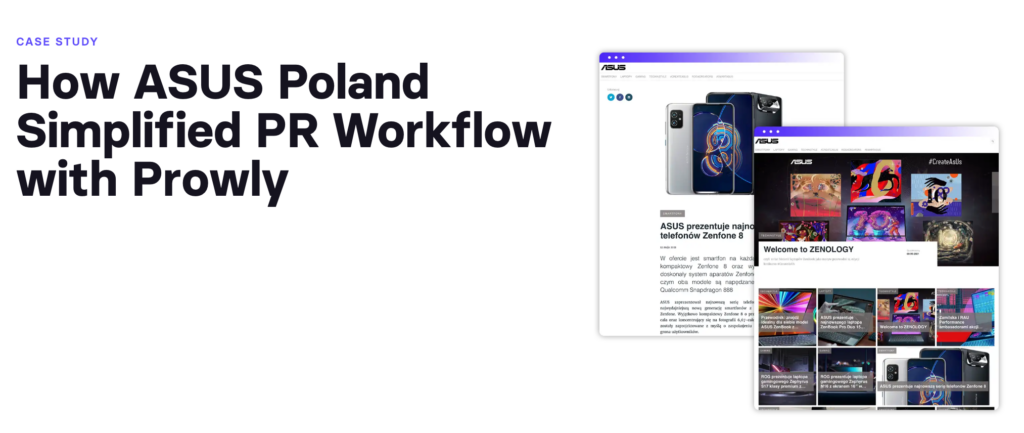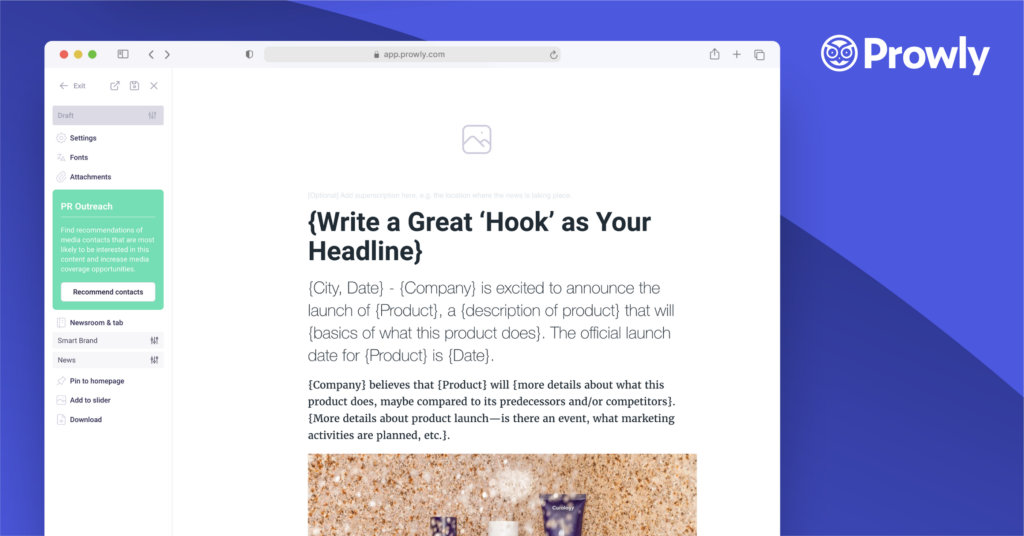Who doesn’t love a good story? We’re instinctively drawn to them from an early age. No wonder storytelling creates a thoughtful thread that takes big, complex ideas and simplifies them into an easy narrative. PR storytelling follows this same pattern of connection.
When you’re engaged in a story, you’re invested in learning what comes next. You become an active participant in the story. In fact, research has shown time and time again that our brains are wired to look for these story patterns. There’s a predictability and logical formula to them that we naturally recognize and enjoy.
The best stories spark interest, keep us listening, connect emotionally, and drive us to action. That’s why we can continue to find storytelling everywhere today, from video games to Netflix series to YouTube channels.
The importance of storytelling in PR can’t be stressed enough. PR is the part of marketing that shares the brand story with your customers, potential customers, employees, and the media.
With a great brand story, your company will create loyal customers, win over new ones, excite your team about their work, and entice the media to cover your brand.
If you haven’t committed yet, now’s the time to take full control of your brand story. Don’t leave it vulnerable to being shaped by outside forces! Focused PR storytelling will get you there, and we’ll discuss how you can take the wheel. Here’s how.
How to do PR storytelling
Start with a clear brand voice
Pull up your company’s homepage and start reading it aloud. Now, imagine the person making these statements.
Can you see them? Is it a man or a woman? Are they dressed in a business suit or jeans and a t-shirt? Would you want to have coffee with them?
It may sound silly, but this is an important exercise in determining whether or not you’re drawing your potential customer into your brand within seconds, like you need to.
Your brand voice forms the first connection with the recipient, whether they’re a potential customer, job applicant, or journalist. The old adage that “people buy from people” continues to hold true.
So where to begin in shaping this brand voice? A brand voice starts by determining what the mission and values of the brand are. If your company doesn’t have these in writing yet, now is the time. Determine:
- What problem are we solving for our customer with our product or service?
- How will our solution affect our customer’s life for the better? What does their “win” look like?
- What values are shared with our customer and us? (Affordability? Exclusivity? Sustainability?)
Follow the hero’s journey
It worked for The Odyssey in 700 B.C.E., and it will work for your brand too.
The storytelling theme of the hero’s journey has had universal appeal across time and cultures. We enjoy connecting with and rooting for a hero. We can’t help but want to know what they’ll do next.
Like all great story frameworks, the hero’s journey is made up of characters, a plot, a conflict, and a resolution. This exact same structure works brilliantly for PR storytelling and should be considered when drafting your brand story.
In the case of PR storytelling, the “hero” can be represented in two different and distinct ways.
First, with the product or service as the hero (think Mr. Clean delivering a Magic Eraser to get your kid’s crayon drawings off your living room wall). Or second, as the customer becoming a hero for their use of your product or service, like a parent delivering a healthy but delicious after school snack to their hungry kids.
The key is to make the hero special, having some extra insight or edge that’s allowed them to discover “the secret”.
The conflict of your brand story is the problem that your brand can solve. To really connect, mentally get into your customer’s shoes and describe the problem in vivid detail, so they recognize it clearly and feel like you’re speaking directly to them. Your prospective customer will know this issue so specifically that they’ll immediately become engaged. They just have to know what the solution is!
The plot of your story is your customer’s journey from frustration with the problem to wisely discovering your solution. The resolution is the descriptive explanation of their new reality with the frustrating conflict out of the way.
To carry the plot, all brands naturally have three PR storytelling timelines they can work from: its history (the founder’s story, the product discovery), its current situation (a new launch, partnership, or company announcement), and its future (the mission, the goal, the next steps).
Just remember that your brand story needs to be unique, so create it with a close eye on your competitors’ brand stories. If you get them too close, you’re not standing out from the crowd of options.
Get emotional and real
Emotions are what connect people to other people, places, and things.
Whether developing content for customers or the media, focus on how you can reach them on an emotional level. Deliver excitement, anticipation, and curiosity to prospective customers and journalists. Deliver consensus, pride, and loyalty to current customers to continually build their brand trust.
A successful brand with a strong story also welcomes people into its community with its product or service. Bring real people into the story to give it life. Introduce your brand founders and employees. Feature them on your website and social media platforms with photos and quotes. For PR storytelling directed at the media, craft and pitch stories about these employees.
Many customers also want to know that companies are socially responsible and share their values. If your company has commitments to charity, employee wellness, and DEI initiatives, share this part of your brand too.
Here are some PR storytelling examples that can connect on an emotional level:
1️⃣ Highlight lifestyle improvements. Instead of focusing on the features of your product (“From the freezer to the table in 30 minutes”), focus on how it will affect the customer’s life (“Unwind with a glass of wine and your favorite TV show while dinner makes itself.”).
2️⃣ Make it human. Your press releases, website, newsletters, and social media captions shouldn’t read like product manuals. They should have an interesting human voice that speaks to the reader like an old friend.
3️⃣ Create suspense. Tease a launch or announcement by revealing it in 2 or 3 parts. Share the date that the final piece of news will be revealed.
4️⃣ Be open and honest. If getting the product right took years and 5 failed tries, don’t hide it! People enjoy a tale of persistence that ultimately leads to success. Tell the true story, and you have a better chance of connecting.
Finally, don’t forget that your existing customers are part of the story too. Their voices are extremely powerful in building trust and authority with prospective customers, so include their testimonials whenever possible.
And if you're looking for more brand story examples, here's a whole article full of tips and templates.

Tell the story across all marketing
Now that your brand story is written, it’s time to share it across all of your marketing efforts.
Tell your story to your customers and prospective customers across all channels and in varying mediums:
- In written blog posts on your website and email newsletters.
- In compelling photos on Instagram and Facebook.
- In video tutorials on YouTube.
- In humorous video clips on TikTok.
- In motivational posts on LinkedIn.
Don’t worry about all of these channels; you can pick 2-3 to start. Look for the places your prospective customers are most likely to be.
Tell your story to the media through creative email pitches, compelling press releases, and photoshoot collections. Use automated PR software like Prowly to created visually-stunning online, interactive, and media-rich PR content that communicates your brand story effortlessly.

Share the brand story internally
It’s not enough for a PR team to share the brand story to the media; it needs to run through every aspect of the business, from employees communications to customer support to the sales team.
Marketing teams continually deliver brand messages through multiple platforms and channels, and every message needs to reflect the brand story correctly. Work closely together to find common phrases and images that will easily connect-the-dots for customers.
For example, using the same models in photos for email newsletters, social media captions, and the website results in a cohesive and unifying story wherever the customer encounters your brand.
This may seem like basic knowledge, but it’s surprising how many brands fail to connect their marketing strategies across platforms and instead deliver a disjointed customer experience. Focus on this one point, and you’ll already be way ahead of many brands.
Time to get started
There is a secondary added benefit to creating and sharing a brand story through compelling PR storytelling: team retention. People want to work for companies that are exciting, values-led, and on a clear mission. When your team is excited about the brand message, they’ll want to stay on board and spread the word.
With so much value to add with a clear brand story using excellent PR storytelling, it’s time to get started!
Cover photo by Daniel Schludi

